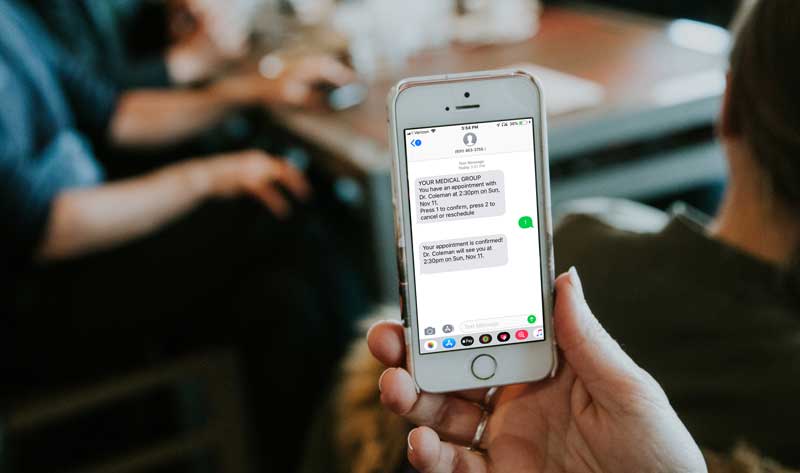What to Look for in a Patient Appointment Reminder Vendor

Relatient’s VP of Partnership Shares Important Functions and Features
This is a sponsored and guest post from Relatient.
You’ve decided to replace manual appointment reminders with automation. Congrats! Whether you’re replacing phone calls, postcards or letters—you’re about to reclaim countless hours and watch your no-show rate take a dramatic dive. Now that you’ve decided to pursue automated appointment reminders, you might be wondering how to get started. It can be overwhelming to sort through your options or know what to look for.
We’ve got you covered. Here’s a list of important functions and features to look for in a patient appointment reminder vendor.
Unlimited Messaging / Flat Cost
Prioritize unlimited messaging and a flat cost. Why? Cost-per-message pricing adds another aspect to manage and discourages following best practices around multi-modality. Plus, you can budget appropriately.
Multi-Modality: Voice, Email and Text
Text is by far the most effective communication method when compared to voice and email. Only 20 percent of emails are opened, but 99 percent of texts are opened. That doesn’t mean you should abandon all other modalities. Think about how you communicate with your friends, family and co-workers—most people mix and match communication modalities in their conversations. It works for businesses, too. Best practice is to start with all three methods.
Patient Preference Learning
Following the last point, don’t just ask patients for their contact preference. Learn it. If a patient consistently responds to one method over the other, your appointment reminder solution should have the ability to learn those preferences and apply them. Again, this learning comes naturally to most people, but for some reason, most vendors don’t think this way.
Confirmation
The most effective vendors ask a patient to confirm their appointment. Medical Group Management Association (MGMA) member Jeffrey Rydburg, CMPE, shared his experience in this article. “You should get confirmation from the patient, not just give them a reminder. If we don’t have contact information for a patient and don’t try to contact them, our no-show rate is more than 10 percent. If we remind them of the appointment, the no-show rate drops to about 6 percent,” says Rydburg. “However, if we ask them to confirm the appointment (touchtone, click, etc.), the no-show rate drops to less than 3 percent. The point is don’t just remind, confirm. It creates a psychological agreement between the patient and the practice.”
Easy Rescheduling
One of the top reasons for patient no-shows is that they meant to reschedule and didn’t. All messages should make it easy – really easy – for your patients to reschedule.
Integration with Your Practice Management (PM) System
Automated appointment reminders offer the greatest benefit when they integrate with the practice management system, reducing data entry burden on practice staff. Once the appointment reminder system is selected and set, it should leverage your staff familiarity with the ideal practice management system for your practice.
Automatic No-Show Outreach
When a patient doesn’t show up, your appointment reminder system should automatically reach out to reschedule so that you and other staff don’t waste time trying to reconnect.
Telephone Consumer Protection Act (TCPA) Compliance
With more and more patient messages being initiated as a result of value-based care, population health and mobile payments, providers are discovering that they are being held to the same consumer messaging laws as consumer companies. TCPA limits the amount and frequency of messaging to consumers. Most appointment reminder solutions have no insight into what other patient messaging is happening, which can cause uncoordinated messaging and fines. Look for a vendor that can handle all patient outreach and knows the TCPA laws.
Now You’re Set.
You’re ready to set off into the marketplace and explore your options. Ask the important questions, look for a vendor who is committed to supporting you after the sale, and make sure they check all the boxes above. Good luck!





